Retroperitoneal hematoma: Difference between revisions
Ahmed Younes (talk | contribs) No edit summary |
Ahmed Younes (talk | contribs) |
||
| Line 30: | Line 30: | ||
!Abdominal pain | !Abdominal pain | ||
|- | |- | ||
|Retroperitoneal | |[[Retroperitoneal hematoma]] | ||
| | |||
| | |||
|✔ | |✔ | ||
|[[Anemia]] | |||
| | | | ||
|- | |||
|[[Retroperitoneal abscess]] | |||
|✔ | |✔ | ||
| | | | ||
|✔ | |✔ | ||
|[[ | |[[Leukocytosis]], positive inflammatory markers | ||
| rowspan="3" |[[MRI]] is the best radiologic tool to differentiate between retroperitoneal masses. | |||
|- | |- | ||
|Retroperitoneal tumors (.e.g. [[liposarcoma]]) | |Retroperitoneal tumors (.e.g. [[liposarcoma]]) | ||
Revision as of 16:49, 28 March 2017
| Retroperitoneal hematoma | |
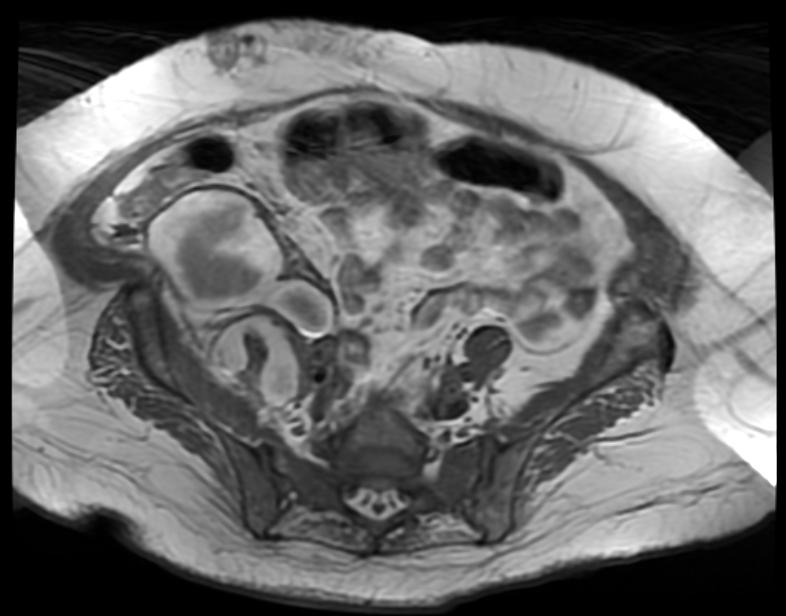 | |
|---|---|
| Retroperitoneal hematoma. (Image courtesy of RadsWiki) |
Editor-In-Chief: C. Michael Gibson, M.S., M.D. [1]; Associate Editor(s)-in-Chief: Cafer Zorkun, M.D., Ph.D. [2]
Overview
Retroperitoneal hemorrhage and retroperitoneal hematoma are potentially life-threatening conditions. Common causes of retroperitoneal hemorrhage are cardiac catheterization and trauma.
Symptoms
The patient may complain of intense flank pain or back pain.
Signs
The patient may develop tachycardia and hypotension if the rate of hemorrhage is rapid.
Rarely, later in the course, the patient may develop a Grey-Turner's sign with bulging flanks, and a bluish discoloration in the region of the flank. Again, it should be emphasized that this sign appears 24 to 48 hours after a severe retroperitoneal bleed and should not be used to gauge whether a retroperitoneal bleed is present acutely.
Differentiating retroperitoneal heamatoma from other diseases
| Disease | Clinical feature | Laboratory findings | Imaging findings | ||
|---|---|---|---|---|---|
| Fever | Weight loss | Abdominal pain | |||
| Retroperitoneal hematoma | ✔ | Anemia | |||
| Retroperitoneal abscess | ✔ | ✔ | Leukocytosis, positive inflammatory markers | MRI is the best radiologic tool to differentiate between retroperitoneal masses. | |
| Retroperitoneal tumors (.e.g. liposarcoma) | ✔ | ✔ | ✔ | positive tumor marker | |
| Chronic pancreatitis | ✔ | ✔ | DM type II, amylase and lipase levels may be slightly elevated | ||
Diagnostic Findings
Patient #1
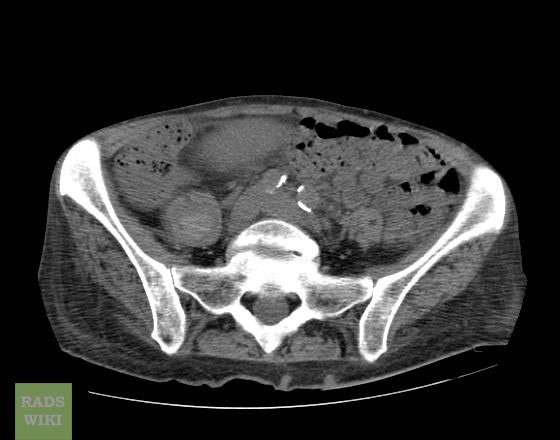
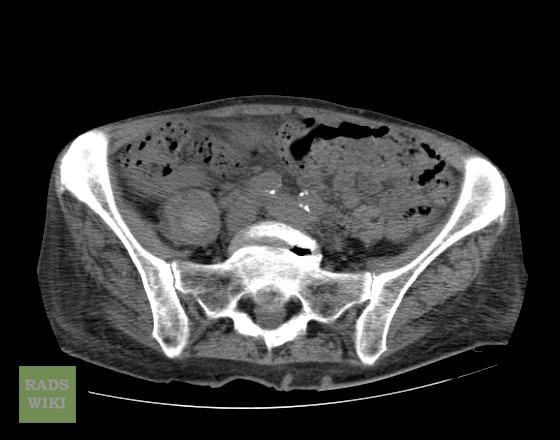
Patient #2

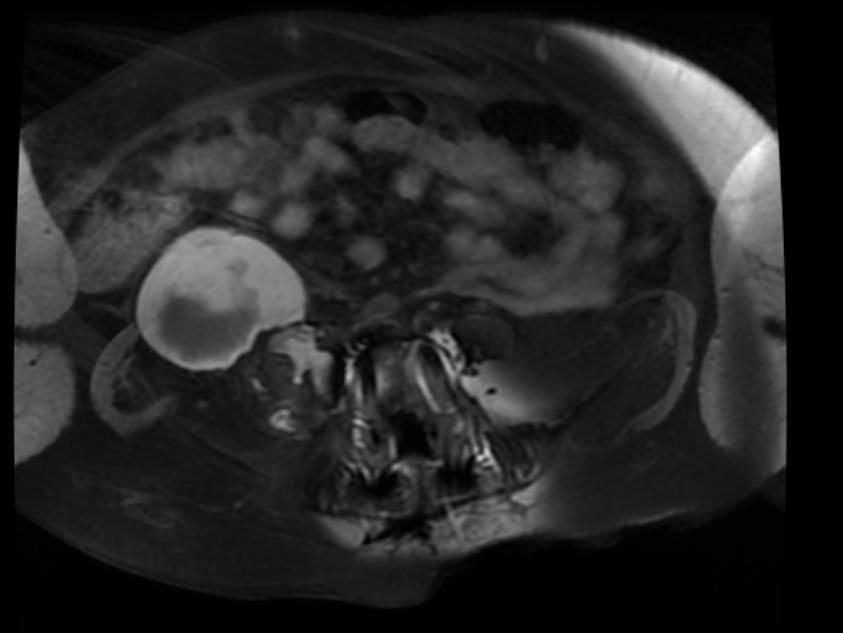
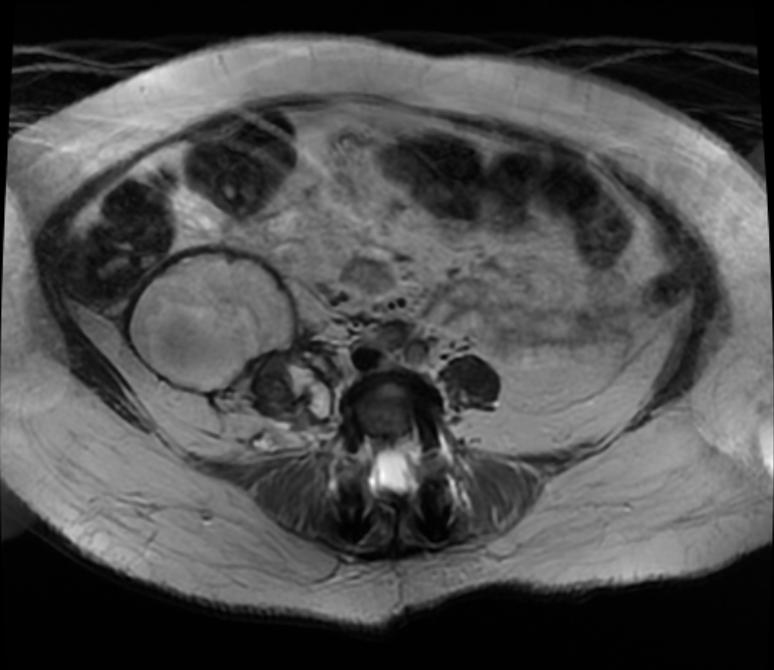
Patient #3
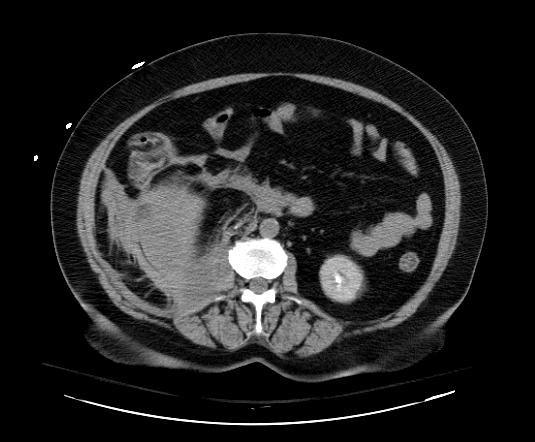
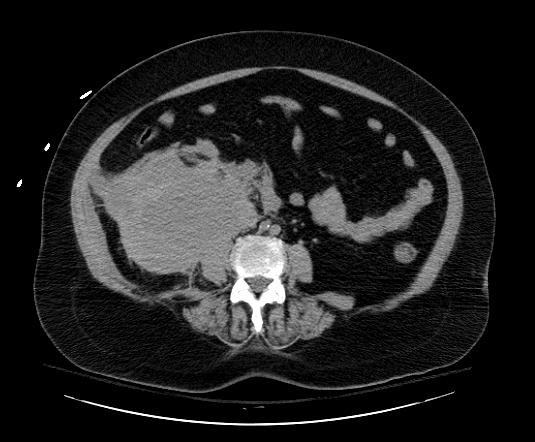
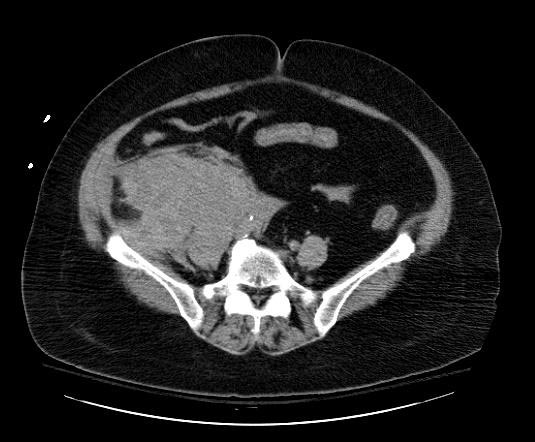
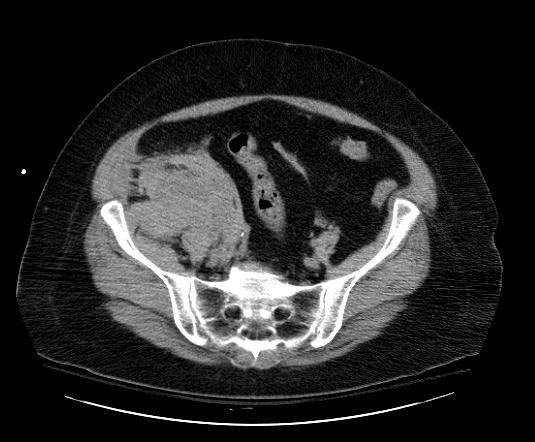
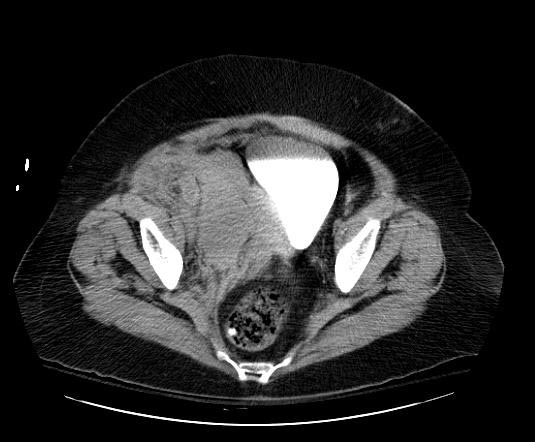
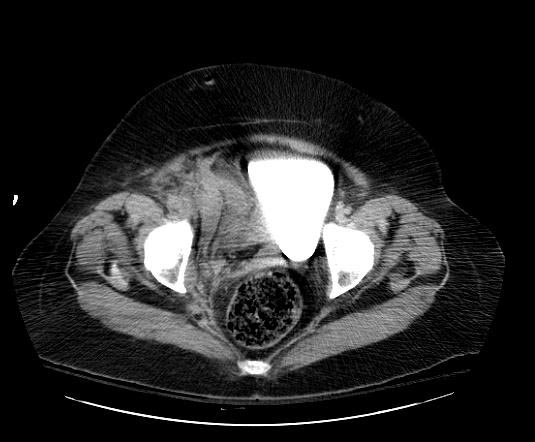
Treatment
Medical Therapy
Pharmacologic
Discontinuation of anti-coagulation
If possible, anticoagulation therapy including both anti-thrombins and anti-platelet agents should be discontinued. One exception is if the patient has had a coronary stent placed, in which case dual anti-platelet therapy should be continued if at all possible. If Clopidogrel must be discontinued, then low dose aspirin should be continued in a patient with a fresh stent.
Reversal of anti-coagulation
Antithrombins
If the patient has received unfractionated heparin, protamine can be used to reverse the heparin. Protamine does partially reverse enoxaparin as well. Bivalirudin has a fairly short half-life, and does not require reversal.
Antiplatelets
If the antiplatelet effects must be overcome acutely, then a platelet transfusion can be administered. However, if the antiplatelet agents on board do not bind avidly to the platelets, then these agents can then bind to the new platelets that have just been transfused. Small molecule 2b3a inhibitors such as eptifibatide and Aggrastat are examples of these types of agents. Agents that permanently inhibit the platelet such as aspirin and Clopidogrel can take up to five days to reverse (the time that it takes for new platelets to form).
Surgery
After blunt trauma, selected retroperitoneal hematomas in the lateral perirenal and pelvic areas do not require operation and should not be opened if discovered at operation. Midline, lateral paraduodenal, lateral pericolonic not associated with pelvic, and portal hematomas are opened after proximal vascular control has been obtained, if appropriate.
Retrohepatic hematomas without obvious active hemorrhage are not opened. After penetrating trauma, most retroperitoneal hematomas are still opened. Exceptions include isolated lateral perirenal hematomas that have been carefully staged by CT and some lateral pericolonic hematomas. As with blunt trauma, retrohepatic hematomas without obvious active hemorrhage are not opened.
References
- Petersen JL, Mahaffey KW, Hasselblad V, Antman EM, Cohen M, Goodman SG, et al. Efficacy and Bleeding Complications Among Patients Randomized to Enoxaparin or Unfractionated Heparin for Antithrombin Therapy in Non–ST-Segment Elevation Acute Coronary Syndromes: A Systematic Overview. JAMA 2004 Jul 7; 292(1): 89-96.
- Jeong TK, Jeong GH, Park BS, Ma SK, Kim SW, Kim NH, et al. Dalteparin-sodium associated retroperitoneal hematoma in a patient with diabetic nephropathy. Korean J Med 2003 64: 322-7.
- Collet JP, Montalescot G, Fine E, Golmard JL, Dalby M, Choussat R, et al. Enoxaparin in unstable angina patients who would have been excluded from randomized pivotal trials. J Am Coll Cardiol 2003 Jan 1; 41(1): 8-14.
- Spinler SA, Inverso SM, Cohen M, Goodman SG, Stringer KA, Antman EM. Safety and efficacy of unfractionated heparin vs. enoxaparin in patients who are obese and patients with severe renal impairment: Analysis from the ESSENCE and TIMI 11B studies. Am Heart J 2003 Jul;146(1):33-41.
- A Vayá, Y Mira, J Aznar. Enoxaparin-related fatal spontaneous retroperitoneal hematoma in the elderly. Thromb Res 2003 Apr 15; 110(1): 69-71.
- The SYNERGY Trial Investigators. Enoxaparin vs unfractionated heparin in high-risk patients with non-ST-segment elevation acute coronary syndromes managed with an intended early invasive strategy: Primary results of the SYNERGY randomized trial. JAMA 2004 Jul 7; 292(1): 45-54.
- Lemos JA, Blazing MA, Wiviott SD, Brady WE, White HD, Fox KA, et al. Enoxaparin versus unfractionated heparin in patients treated with tirofiban, aspirin and an early conservative initial management strategy: Results from the A phase of the A-to-Z trial. Eur Heart J 2004 Oct 25(19): 1688-94.
- Cadroy Y, Pourrat J, Baladre MF, Saivin S, Houin G, Montastruc JL, et al. Delayed elimination of enoxaparin in patients with chronic renal insufficiency. Thromb Res 1991 Aug 1;63(3):385-90.
- Antman EM, Morrow DA, McCabe CH, Murphy SA, Ruda M, Sadowski Z, et al. Enoxaparin versus Unfractionated Heparin with Fibrinolysis for ST-Elevation Myocardial Infarction. N Engl J Med 2006 Apr 6;354(14): 1477-88.
- Gonzalez C, Penado S, Llata L, Valero C, Riancho JA. The clinical spectrum of retroperitoneal hematoma in anticoagulated patients. Medicine 2003 Jul 82(4):257-62.